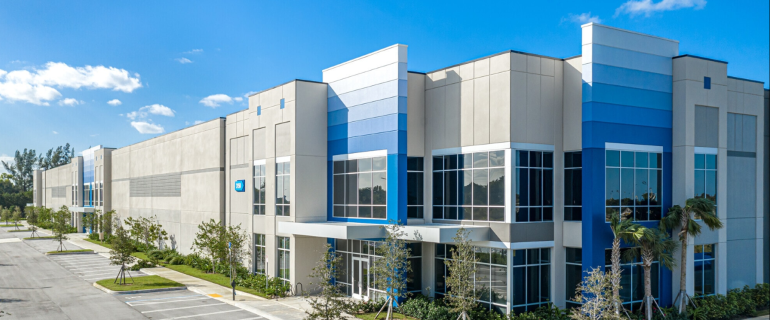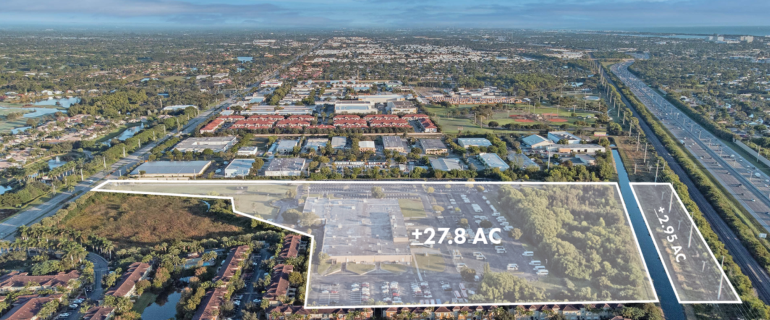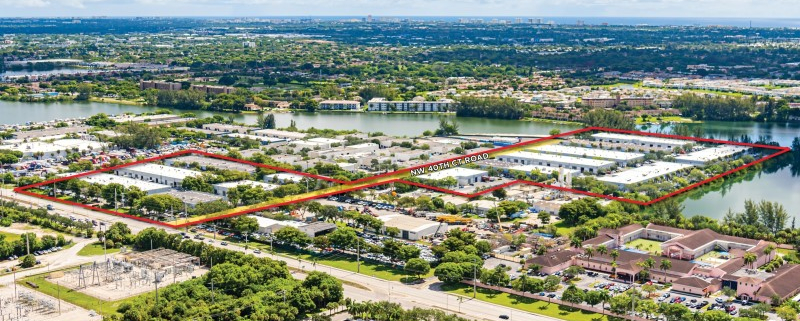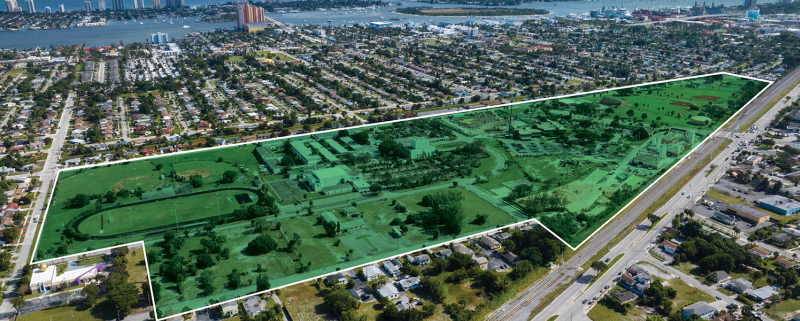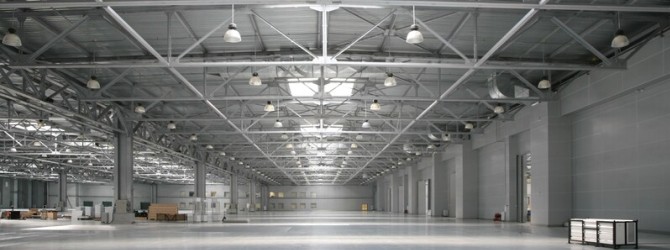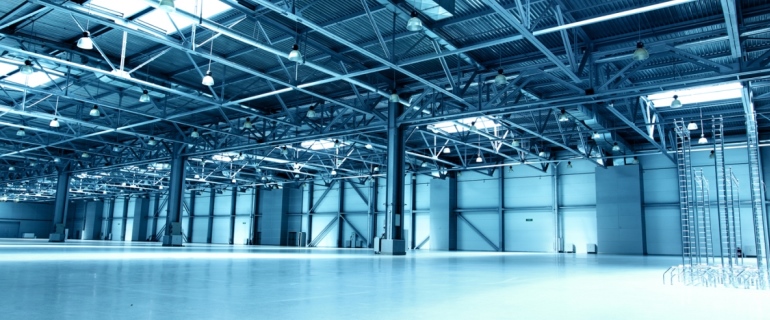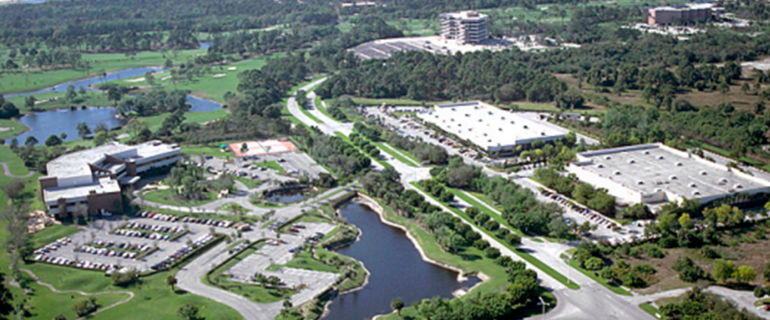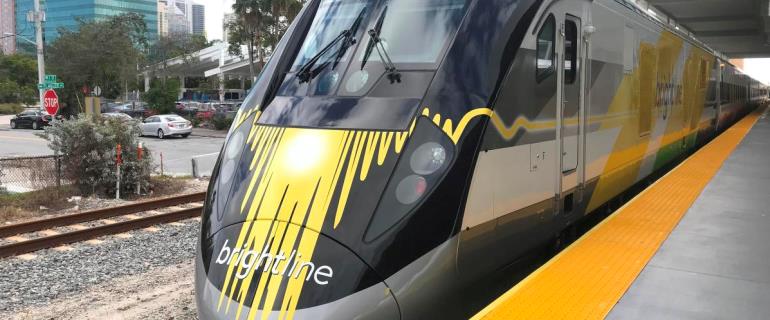Despite an undeniable slowdown in 2023, optimism still permeates Miami’s commercial real estate sector — buoyed by the Federal Reserve‘s recent signaling that rate cuts are on the horizon.
“The problem is not South Florida real estate,” said Arnaud Karsenti, managing principal at 13th Floor Investments. “We’re probably way better off than our peers around the rest of the country.”
The city has settled into a new normal and is positioned to see continued growth in 2024 despite challenges in office supply, multifamily dynamics and construction costs, nearly a dozen industry insiders told Bisnow in interviews this month.
“Out of all the markets we’re in, and we’re at a decent amount across the country, South Florida is far and away the healthiest,” said Ryan Shear, managing partner at PMG.
The rapid growth spurred by the pandemic — with corporate behemoths from Citadel to Microsoft moving to the region and an influx of $7.4B in wealth in 2022 — has slowed, but it remains the driving force behind the city’s expansion.
Investment volume has also tailed off, but the latest signal from Fed Chair Jerome Powell that 2024 could see as many as three rate cuts has buoyed the expectation among investors, developers and brokers that Miami will see an increased flow of capital next year.
“2023 was a throwaway year,” said Michael Fay, managing director of Avison Young’s Miami office and chairman of the brokerage’s U.S. Capital Markets Group Executive Committee. “People are looking for reasons to be back in the market and looking for opportunities, but to do that they need to have rates participate in that look.”
‘We Feel Like We’re At The End Of The Cycle’
Miami was far from immune to a rate-driven slowdown. The office sector saw 12 transactions through the first three quarters of 2023, compared to 26 deals over the same period a year prior. But even as volume plummeted, the sales that closed signaled confidence in the market, with the price per SF dipping only slightly from 2022 and outperforming 2019, before the pandemic helped boost the city’s profile.
Investors and brokers told Bisnow deal volume across all asset types is poised to rise again next year. But there is some debate as to when capital will begin flowing more freely, with some expectation that any rate cuts from the Fed will take time to percolate down to banks and loan originators.
“A lot of us are expecting some rate decreases in the first half of next year, which will lead to a more attractive forward curve,” Karsenti said. “Banks will start to lend on that curve and will ultimately provide loans at lower rates.”
The presidential election in November is likely to increase the political pressure on the Fed, said Fay, who described rate cuts as “candy” for the market. He said the beginning of 2024 will likely see a few deals before deal volume picks up in the back half of the year.
“We feel like we’re at the end of the cycle,” Fay said. “We’re hopefully going to be at a point that will mark stability. When you have stability and clarity, people can price in risk in a much better way.”
Investors across the country are raising billions of dollars to target distressed assets facing loan repayment hurdles, especially in the office sector, where an estimated 44% of properties have more debt than value at this point.
But South Florida’s office market has been an outlier to national turmoil, with Miami, Fort Lauderdale and Palm Beach all among the top five markets for annual rent growth through October. South Florida office asset values are expected to grow in 2024, according to CoStar, while most of the country is still in correction mode.
Miami’s apartment market is also ranked as the most competitive in the country, with a 97% occupancy rate and the fifth-highest rents in the country.
The $5.5B in CMBS loans on South Florida properties set to mature in 2024 account for only around 5% of the national total, according to CoStar. Falling interest rates are expected to spur acquisitions, but assets trading in South Florida are unlikely to be facing debt challenges.
“I am concerned that rates are going to come down and everybody that’s been on hold, waiting and delaying, they’re all going to try to run through the same gate at the same time, which will just drive prices right back up,” Shear said.
‘They’re Not Massive HQ Moves’
Office buildings in Miami are forecasted to grow in value in large part because the pandemic-era leasing boom has waned, but not abated.
“There’s around 3.8M SF of pent-up office demand among tenants touring in Miami,” said Tere Blanca, the CEO of Blanca Commercial Real Estate.
Around 20% of those companies are new to the market with much of the remaining activity being driven by firms that opened offices in Miami during the pandemic that are now looking to expand their footprint.
“Every lease that we do today in our existing buildings, that’s a record for the highest rate in that building,” said Brian Gale, vice chair at Cushman & Wakefield in Miami. “I think office rents could rise another 25% in 2024.”
Office development remains the third rail of real estate investment, even in South Florida where the sector has continued to perform well. Few new office developments are expected to break ground next year, leaving tenants that are engaged in an ongoing flight to quality with limited options for space.
Miami had 1.6M SF under construction at the end of the third quarter, according to Blanca, half of which is the fully leased 822K SF 830 Brickell tower.
“The lack of new construction will hinder leasing activity next year with the new-to-market tenants pausing and sitting on the sidelines because the new product is not in place,” Blanca said. “For a new office project to get financing, lenders often want to know an anchor tenant has signed on, and the companies currently in the market are generally looking for spaces ranging from 5K SF to 20K SF. A lot of these deals are not getting done, because they’re smaller transactions than the Citadels of the world,” Blanca said, referencing the 90K SF lease the hedge fund signed at 830 Brickell last year. “They’re not massive HQ moves.”
‘I Can’t Imagine A Multifamily Project That Would Pencil Out’
Apartment development is also expected to face headwinds in 2024. Rent growth has tapered off amid a wave of new supply — there are around 30,000 luxury apartments alone under construction in Miami — and cuts to interest rates won’t be enough to offset the high cost of construction, developers told Bisnow.
“I can’t imagine a multifamily project that would pencil out, and I can’t imagine a lender that’s going to lend money to multifamily,” said Armando Codina, executive chairman of Coral Gables-based developer Codina Partners. “That space is going to go down significantly.”
The state-level effort to spur apartment construction through the Live Local Act generated a wave of interest, but those proposals are also facing financial hurdles. The law created tax abatements and other incentives for projects with at least 40% of units set aside for workforce housing, but those tax savings have so far been outweighed by the high cost of debt and construction.
“In the meantime, the projects that are expected to move ahead are those near mass transit stops, which can leverage county-level zoning to achieve the needed density to make projects financially viable,” said Iris Escarra, co-chair of the land use practice at Greenberg Traurig.
Miami-Dade County has been adding to its Rapid Transit Zones as it encourages the use of rail and bus lines to alleviate growing traffic congestion and increase density around transit stops before an expected push for federal funds to expand the rail system.
“There’s always a chicken or an egg with transportation and rail lines,” Escarra said. “For the county to extend the line north, for example, they need to show that there’s enough density on the line to qualify for federal dollars.”
“Condo development, by contrast, has remained attractive for developers. Financing for condos can be easier to secure because the deposits on units that are pre-sold can offset the size of construction loans and the shorter-term investment horizon is more attractive for lenders,” said Edgardo Defortuna, CEO of Miami-based developer Fortune International Group.
Condo sales have declined from pandemic highs, but the buyer pool has been boosted by international interest extending beyond Latin America. Many buyers see the purchase of a pre-construction condo at today’s pricing as a hedge against inflation and a way to avoid today’s high cost of debt.
“In a way, they have the best of both worlds, protection against inflation because they’re fixing the price, and also potentially getting lower interest rates when they need to close on their acquisition and finance,” Defortuna said.
Contractors ‘A Little More Hungry’
A slowdown in new development this year has reduced some of the upward price momentum on construction. With fewer projects breaking ground, developers said they have regained some leverage in negotiations with construction firms and contractors, even though material prices remain high.
“The numbers have gotten better but, even more important, I’m seeing the contractors being a little more hungry,” Codina said. “I’ve had [subcontractors] a year ago say to me, ‘I don’t want to bid unless I’m going to get the job, I’m too busy.’ Now, we’re breaking ground because we’ve seen a little bit of a different attitude.”
Jay Fayette, Suffolk Construction’s president for the east coast of Florida, has seen the number of proposals coming across his desk decline but said he still expects to have a busy year as his firm moves through a backlog of projects that have been waiting to begin construction.
“We’re going to be very busy, and busier than last year,” Fayette said. “But that’s not necessarily due to the abundance in the market, it’s really due to the abundance that we had in the pipeline that we’re finally getting shovels in the ground. The shortage of workers that has plagued the construction industry is expected to continue, and Suffolk is investing resources into worker recruitment and retention to try to offset some of the challenges.”
Raw materials like wood and concrete have become more available, but switchgears, the backbone of a building’s electric system that became difficult to source during the pandemic, remain one of the largest hurdles for new construction.
“We don’t dare tell an owner it’s less than 65 weeks” to secure switchgears, Fayette said.
Construction costs have also begun to stabilize, but a crowded development pipeline in the region means strong demand for materials will keep prices from falling significantly in the year ahead.
“I think there is a world where construction costs come down. I can’t say that it’s in the Southeast region,” Fayette said. “We’re in nine regions nationwide, and we are seeing some softening of construction costs in other regions, but the state of Florida is a robust construction market.”
Source: Bisnow


